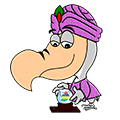Photography Museum Mauritius
Written by
674
views
1.7K
points
0
users
Nestled in a cobbled back lane near the municipal theatre in Port Louis is a small cottage dating back to the 18th century called the Photography Museum. Owned by Tristan and Marie Noelle Breville, the small but elegant cottage takes the visitor down the lanes of Mauritian photography revealing photos of once famous but now forgotten photographers such as Leger, Rambert and Kwong Pak Yin. The museum is opened on Mondays to Fridays from 9am to 3pm; the entrance fees is about £3 per adult, £2 for students and free for children under 12.
Inside the museum, an interesting array of photos and cameras that have been in use during the past 150 years in Mauritius can be seen. Pictures of different themes ranging from nature to people lay on the white washed walls of the museum. Amazingly the camera which was used in 1860 during the British rule to capture the faces of Indian workers brought to the island as indentured labourers in case they ran away is displayed. The printing machines that were used to print the first newspaper in the southern hemisphere can be seen as well as old cinema projectors.
One of the most treasured elements of the photographic world is exhibited in the museum: the daguerreotypes. They were the first live scenes that were captured onto copper plates and transformed into daguerreotypes, so called after the man who discovered the process Daguerre. The word photo was not yet in use in 1839 but it is interesting to note that Mauritius produced its first photos in February 1840; four months after France bought the technique from Daguerre.
About 1000 cameras are present in the museum ranging from the most ancient to modern ones; amongst them is the ancient photographic chamber of Roger Halbwachs. More than 400 scripts on photographic literature can be seen including the first published work on photography by Daguerre in 1839 as well as a now coveted rare book by Felix Tournachon (Nadar). A rough inventory of the museum reveals more than 400,000 negatives, more than 5000 glass negatives, 9000 ancient postal cards, 150 years of photographic documentation, 50 photo frames, 38 daguerreotypes, 20 ancient photo albums, more than 25 hours films on Mauritius and its surroundings since 1839 and everything that has been going on in the cinematographic world in Mauritius that could be photographed.
Mauritius was one of the first countries to get involved in photography (one of the first buyers of a camera in Paris in 1839 was a Mauritian, Ferdinand Wörhnitz!) and knowing that pictures and other photographic materials are spread throughout the world, the Brevilles try to bring them back from wherever they are with their own money so as to conserve the heritage of the island in their little museum.
Similar topics for you
National History Museum Port Louis Mauritius
The Naval museum Mauritius
La Nef museum Mauritius
Blue Penny Museum Mauritius
Jean de robillard mansion mauritius
Shell museum in tamarin mauritius

Are there short courses in Mauritius?
Is there a gallery to display electronic artwork/digital painting/CG in Mauritius?

Are there any relics of railways in Mauritius other than at the Naval Museum in Mahebourg?

What has been your favourite experience regarding your visit to the Aapravasi Ghat Museum?


